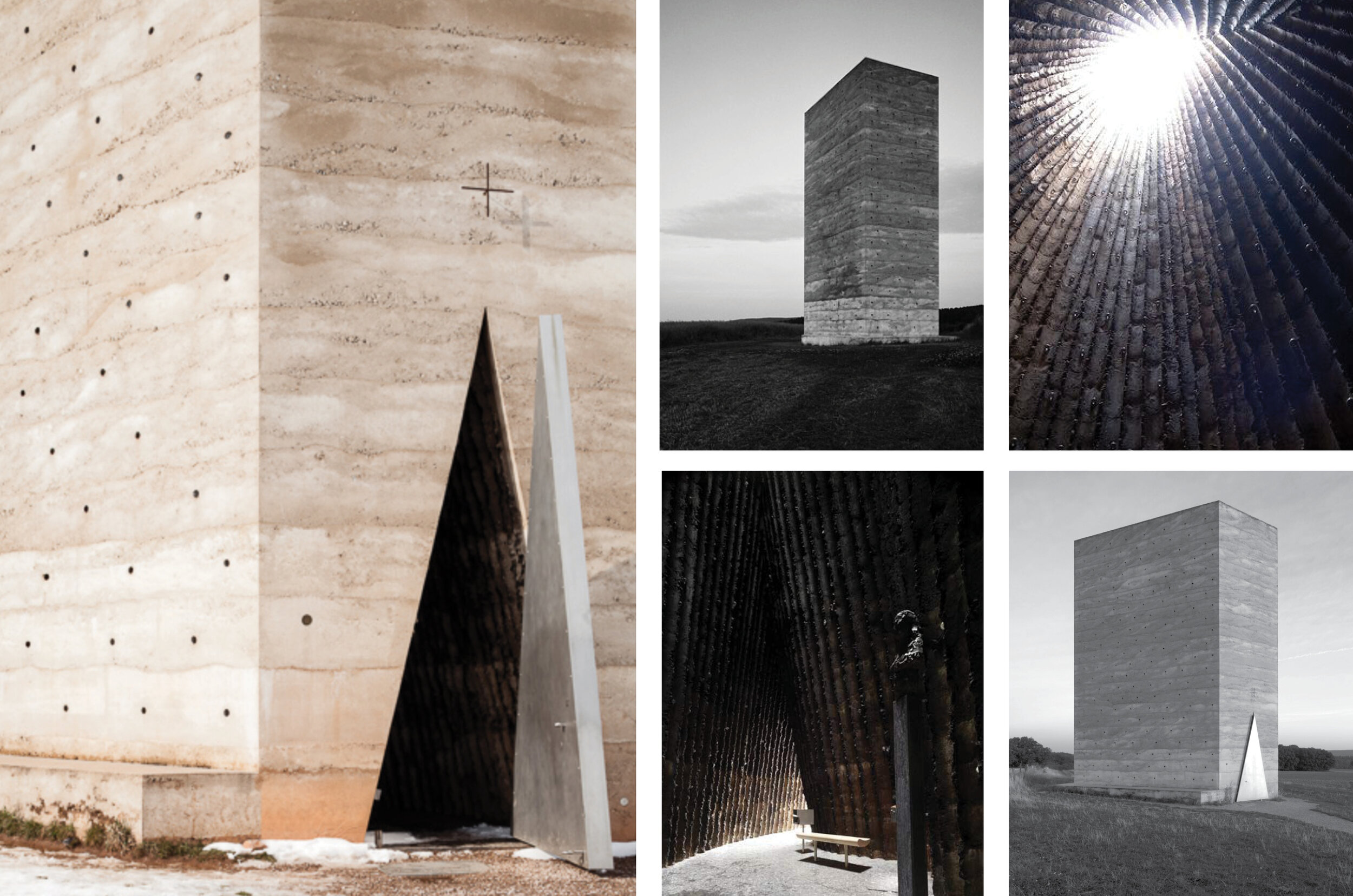Modern love.
Taking a closer look at contemporary places of worship.
Abbey of Our Lady of Nový Dvur
Location - Czech Republic / Architect - John Pawson
A Cistercian monastery west of Prague and the first built after the fall of communism and the birth of the Czech Republic. A present day example of Cistercian architectural tradition – simple, utilitarian, pure, and rational. As has been the case since the 12th century, this architecture of light provides a sublime environment for monastic life.
Bruder Klaus Field Chapel
Location - Germany / Architect - Peter Zumthor
Dedicated to the patron saint of Switzerland, Niklaus von Flüe (Bruder Klaus), this hollowed concrete monolith sits alone in a farmer’s field in Germany. It was commissioned by a man to give thanks for the fortunate life his wife had enjoyed. He built it with his friends and family. Hand-mixed concrete was layered over a vertical bundle of pine logs which, after slowly burning away for three weeks, left a sacred, dark void within which to contemplate life’s gifts.
Church of Saint-Jacques de la Lande
Location - France / Architect - Álvaro Siza Viera
In Brittany, south of Rennes, sits an elevated cylinder lifted by rectangular supports. The simple, white concrete shapes and carefully placed windows create a complex yet calming interior bathed by indirect natural light.
Church of the Light
Location - Japan / Architect - Tadao Ando
The stark interplay between solid and void creates a dramatic scene of lightness and darkness. Juxtaposing the material and the immaterial stimulates one to reflect on the spiritual and secular aspects of life. Decoration and adornment can distract from deep contemplation but here there exists only light and space.
Santa Maria Assunta
Location - Italy / Architect - Alvar Aalto
Capturing the northern light above the Apennine mountains, the parish church in the village of Riola is both visually arresting and in perfect harmony with the landscape. As with his spaces in Scandinavia, the Nordic architect masterfully heightens our ability to sense the ever-changing environment and thus reminds us that we are only a small part of our natural world.
Hallgrimskirkja Church
Location - Iceland / Architect - Guðjón Samuelsson
Towering over Reykjavik, the Hallgrimskirkja Church is a modern Icelandic icon. Though designed in 1937, it was only completed in 1986. The church was named after poet and clergyman Hallgrimur Pétursson who authored the Passíusálmar (Passion Hymns). The structure was inspired by the basalt columns resulting from volcanic lava flows around the Svartifoss waterfall. Its powerful organ and minimal vaulted ceiling lifts the spirit of everyone who enters.






